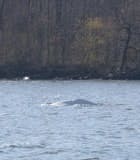American Rivers released its report, “America's Most Endangered Rivers of 2010.” The 25th anniversary edition of the report spotlights 10 rivers facing the most urgent threats and also features key endangered river success stories from the past two decades.
The number one river on the America's Most Endangered Rivers list is the Upper Delaware, where gas drilling threatens the drinking water for 17 million people across New York and Pennsylvania.
"The threats facing this year's rivers are more pressing than ever, from gas drilling that could pollute the drinking water of millions of people, to the construction of costly and unnecessary new dams, to outdated flood management that threatens public safety," said Rebecca Wodder, president of American Rivers. "But the report isn't all bad news. Thanks to the publicity America's Most Endangered Rivers generates, we have enjoyed tremendous victories over the past 25 years, from the Penobscot in Maine to the Big Sunflower in Mississippi to the Klamath in California.
"The report proves that when citizens take action, we can achieve great victories for our rivers and clean water.”
The report is a call to action and emphasizes solutions for the rivers and their communities.
Rivers are selected based upon the following criteria:
• A major decision (that the public can help influence) in the coming year on the proposed action;
• The significance of the threat to human and natural communities; and
• The degree to which the proposed action would exacerbate or alleviate stresses caused by climate change.
“America's Most Endangered Rivers of 2010” are:
1. Upper Delaware River (New York, Pennsylvania)
2. Sacramento (San Joaquin, Calif.)
3. Gauley River (West Virginia)
4. Little River (North Carolina)
5. Cedar River (Iowa)
6. Upper Colorado River (Colorado)
7. Chetco River (Oregon)
8. Teton (Idaho)
9. Monongahela River (West Virginia, Pennsylvania)
10. Coosa River (Alabama)
Source: PR Newswire


